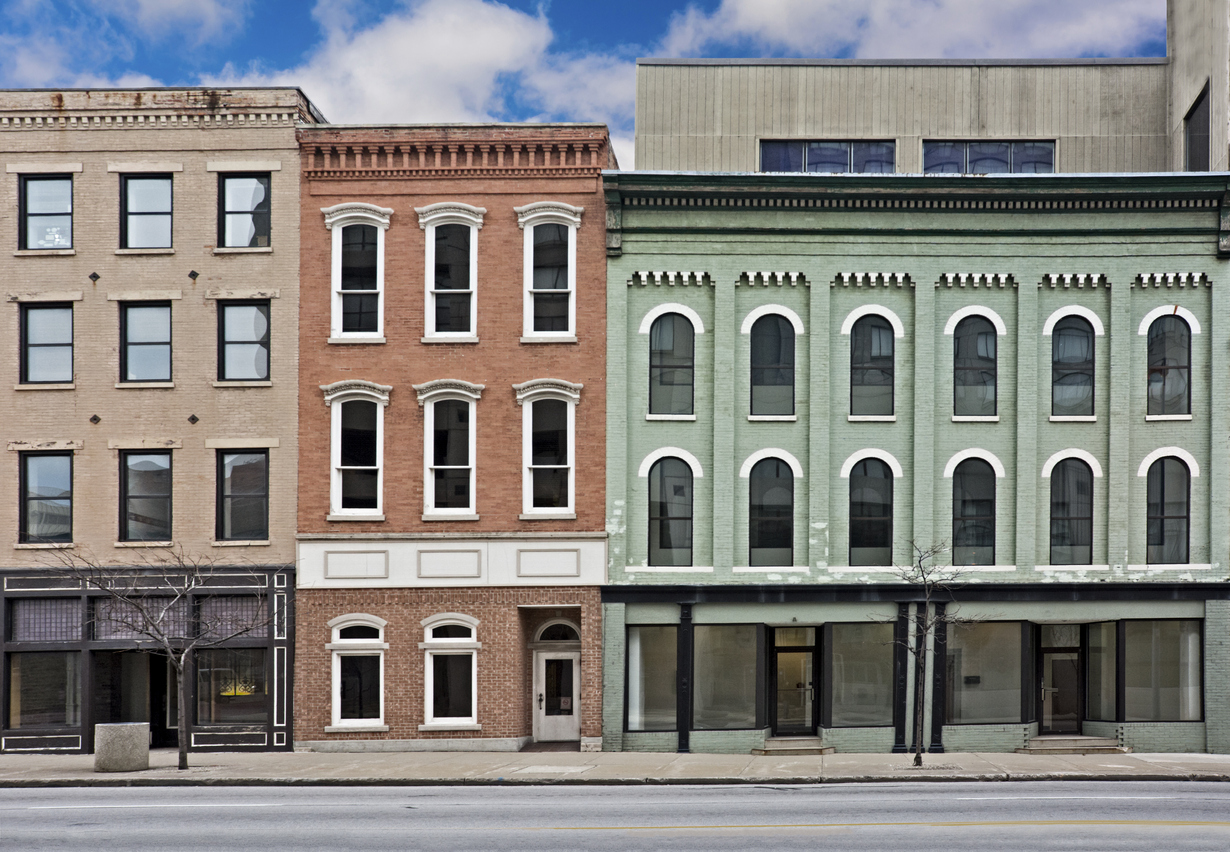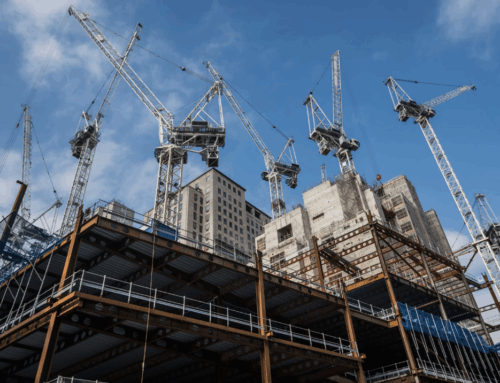By Pete Saunders
The Rust Belt has been given up for dead, at least economically, for the last 50 years. The broad swath of territory that covers the Northeastern and Midwestern United States, centered on the Great Lakes, has seen decades of economic retrenchment, out-migration, unresolved racial tensions, and a growing sense of irrelevance — especially when compared to America’s globally-connected coastal cities and fast-growing Sun Belt cities. There are some who believe the Rust Belt should simply accept its diminished fate and fade into oblivion.
This perception has been internalized by many of the Rust Belt’s own residents. Those who remember the Rust Belt’s halcyon days are mostly senior citizens now. The region’s teeming factories employing thousands of workers have spread to nations across the globe. Productivity gains and automation have further reduced reliance on a low- and mid-skilled workforce. There’s a prevailing sense that, after experiencing so much loss, for so long, the future must also be bleak. And so people yearn for restoration, a return to what once was.
From that, however, an alternative perspective has emerged. A rising number of today’s Rust Belt residents recognize the potential of the region. They embrace the region’s history but see opportunity in an uncertain future. Rather than focusing on the negatives that defined it for a half-century, more people are touting the region’s assets and potential. This group has refused to accept the fate of a lost region. They have given rise to Rust Belt urbanism.
In his introduction to EIG as the new Legacy Cities Fellow, Akron, OH planner Jason Segedy eloquently described the Rust Belt’s former and current position in the hierarchy of American cities:
“Many cities like Buffalo, Cleveland, Dayton, Detroit, Erie, Flint, Rochester, South Bend, Toledo, and Youngstown have experienced incredible ups and downs over the last 150 years.
These cities were some of the largest and fastest-growing cities in the nation by World War I. But after World War II, these cities began a painful period of economic and social decline, as three national trends – the decline and outsourcing of manufacturing, regional outmigration to the Sunbelt, and rapid suburbanization – converged on these communities.”
The convergence of those trends created the Rust Belt we know today. Yet in the aftermath, those trends also created a new kind of American urbanism that hasn’t surfaced before. Rust Belt Urbanism was born.
The emergence of Rust Belt Urbanism wasn’t obvious from the start, much like how the coastal urbanism we herald today did not spring from immediately obvious roots. The coastal brand of urbanism that fueled the growth of New York, Boston, Washington, DC, San Francisco, and Seattle was borne of a reliance on their existing assets: a belief in innovation and technology, a strong foundation of educated citizens coming from world-class institutions, and a transition to a globalized economy. While the Rust Belt has its own set of excellent universities, they’ve historically been viewed by many locals as somewhat separate from the region’s dominant manufacturing economy. Coastal cities were well suited to the dominance of higher education in the global economy. The Rust Belt, less so.
But we’re finding that, in many respects, coastal cities have become victims of their own success. Economic and social inequality has become a feature within many of them, as has devastating housing unaffordability. The coastal “superstar” cities (and indeed, their booming Sun Belt peers) are looking for new solutions.
Because the Rust Belt was forced to look inward, it may have an intellectual approach to urbanism that could be useful. Let’s look at what I call the qualities of Rust Belt Urbanism.
Authenticity. Ten years ago, urbanist Richard Florida wrote about what he called “Generica”: an America full of the very same stores, housing types, malls, and chain restaurants, across its vast landscape. Citing Anthony Bourdain and his search for the “unique, the real”, he said that the advantage of older industrial cities is their authenticity:
“‘What went wrong here?’ is an unpopular question with the type of city fathers and civic boosters for whom convention centers and pedestrian malls are the answers to all society’s ills but Harvey [Pekar] captured and chronicled every day what was–and will always be–beautiful about Cleveland: the still majestic gorgeousness of what once was–the uniquely quirky charm of what remains, the delightfully offbeat attitude of those who struggle to go on in a city they love and would never dream of leaving … A place so incongruously and uniquely…seductive that I often fantasize about making my home there.”
An appreciation of authenticity will play a big part in the rebound of the Rust Belt.
Resilience. In 2013, the Rockefeller Foundation compiled a list of what they called 100 Resilient Cities — places that were particularly adapted and suited to deal with the physical, economic, and social challenges of the 21st century. Since then, the effort’s name has changed to Resilient Cities Catalyst, but the major thrust of their work is still to facilitate urban growth, because cities represent “both our greatest risk and biggest opportunity.” Residents of Rust Belt cities will proudly tell you that they’ve “been to hell and back,” and believe it’s central to their identity — and revitalization. Detroit, for one, is a city that has made resilience and redemption a key feature of its rebranding and growth strategy.
Affordability. As the housing affordability crisis rises daily in the coastal “superstar” cities, Rust Belt cities, lacking the surging demand, find themselves undervalued relative to their peers. It’s true that many Rust Belt cities currently have fewer of the job opportunities that define coastal cities, but many of them are wagering that those priced out of expensive areas will give them a serious look—and the jobs will follow from there.
Unfortunately, not everything that defines the Rust Belt can be considered positive. Cities of the Rust Belt have a well-deserved reputation for being resistant to change, which likely figured prominently in their economic decline. Rust Belt leaders were often unwilling to address their challenges until it was well past the time to effectively deal with them. And it’s also well known that the legacy of American segregation is perhaps most evident in Rust Belt cities, with many of them being among the most segregated metro areas in the nation. Their segregation inhibits their potential.
So much of our nation’s current moment is leading toward a reconsideration of the Rust Belt by the rest of the nation. The lack of affordability and upward economic mobility, the challenges of heat, drought, flooding, and fire presented by climate change, and the impact of a pandemic that struck first and hardest in our coastal cities are causing people to revisit their choices. More coastal residents will begin to view Rust Belt cities as having the built environment, history, and culture they desire, a spirit and strength borne from witnessing great highs and devastating lows, and a comfortable yet attainable quality of life due to their affordability.
There is, however, still much more work for the Rust Belt to do. It’s no coincidence that Minneapolis, MN, the Rust-Belt-adjacent Louisville, KY, and the midsize Rust Belt city of Kenosha, WI, were among the flashpoints that have brought us to the racial reckoning we’re experiencing today. Paired with the violent civil protests that took place in Chicago, IL as well, the region’s equity challenges are on full display.
Every city that’s experienced success has done so by capitalizing on its assets — whether physical, economic, institutional, intellectual, or social. It’s taken some time for Rust Belt cities to figure out what their assets are after the collapse of manufacturing at the end of the last century. However, they appear to be well on their way to building a sound foundation for their future.
Pete Saunders is an urban planner, writer and researcher based in Chicago. His work can be found on his blog, The Corner Side Yard.






